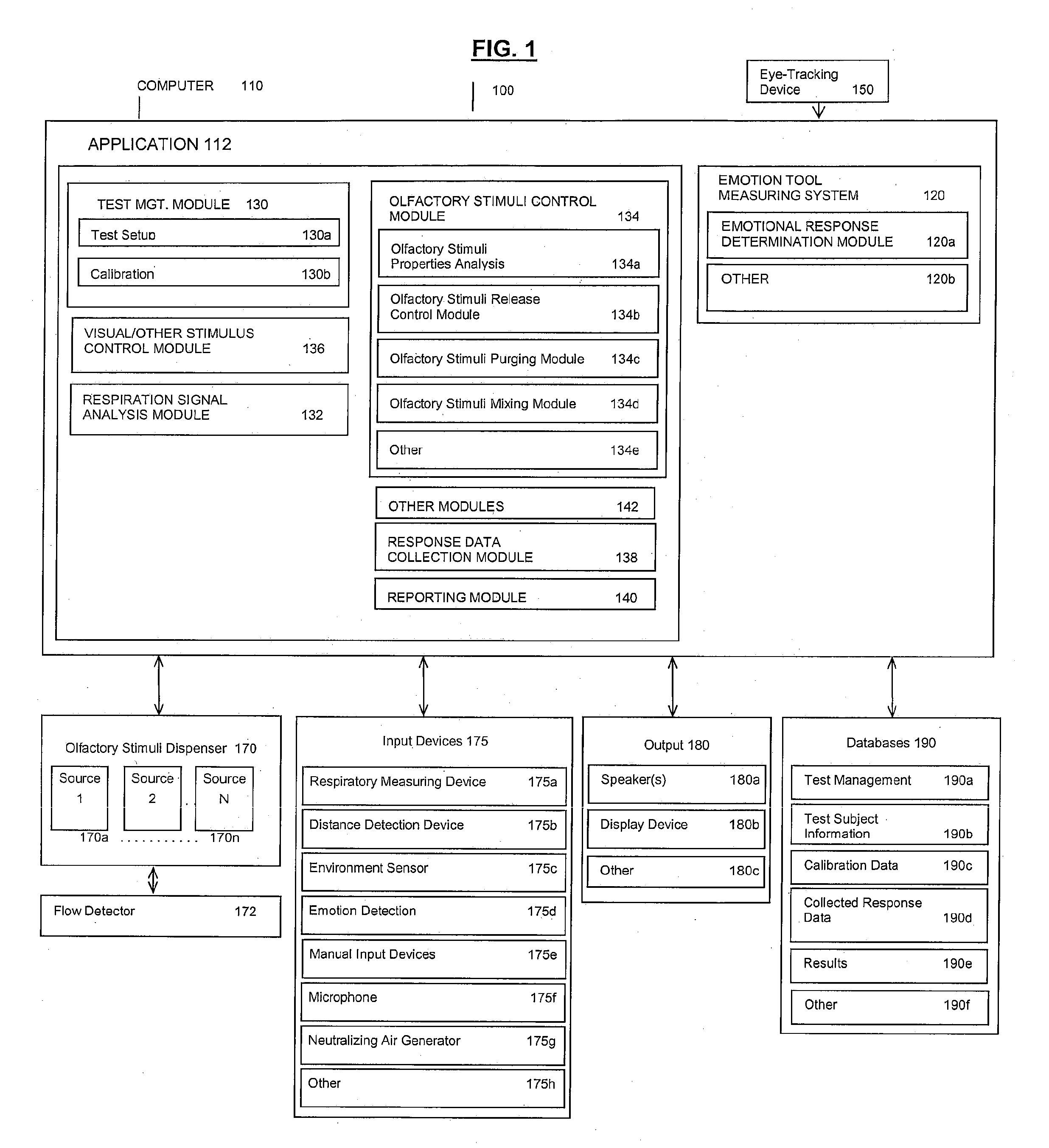System and method for determining emotional response to olfactory stimuli
a technology of emotional response and stimuli, applied in the field of system and method for determining emotional response to olfactory stimuli, can solve the problems of subjective measurement, expensive method, ineffectiveness, etc., and achieve the effect of reducing the influence of olfactory and/or other aspects of environmental conditions
- Summary
- Abstract
- Description
- Claims
- Application Information
AI Technical Summary
Benefits of technology
Problems solved by technology
Method used
Image
Examples
Embodiment Construction
[0053]FIG. 1 illustrates an exemplary system 100 for determining emotional response to olfactory stimuli, according to various aspects of the invention. System 100 may include at least one computer 110 coupled to / interfaced with an eye tracking device 150, a controllable olfactory stimuli dispenser 170, one or more input devices 175, one or more output devices 180, one or more databases 190, and / or other components. Computer 110 may include a processor, circuitry and / or other hardware operable to execute computer-readable instructions. According to one aspect of the invention, computer 110 may include one or more computer-readable storage media configured to store one or more software modules, wherein the software modules include computer-readable instructions that when executed by the processor perform the features and functions described herein and / or other features and functions.
[0054]In some implementations, eye tracking device 150 may include a camera or another known or future...
PUM
 Login to View More
Login to View More Abstract
Description
Claims
Application Information
 Login to View More
Login to View More - R&D
- Intellectual Property
- Life Sciences
- Materials
- Tech Scout
- Unparalleled Data Quality
- Higher Quality Content
- 60% Fewer Hallucinations
Browse by: Latest US Patents, China's latest patents, Technical Efficacy Thesaurus, Application Domain, Technology Topic, Popular Technical Reports.
© 2025 PatSnap. All rights reserved.Legal|Privacy policy|Modern Slavery Act Transparency Statement|Sitemap|About US| Contact US: help@patsnap.com



